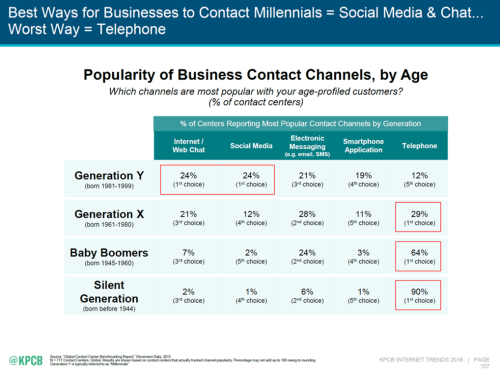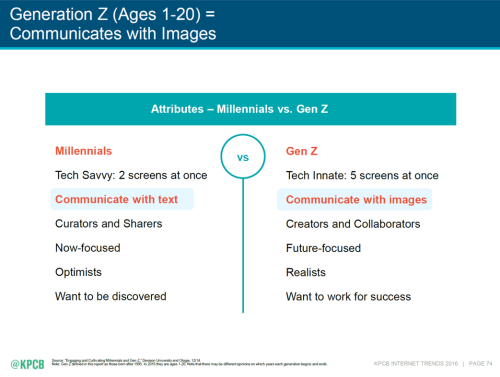
Data Point Tuesday’s mission is to find reports and impactful data sources that most HR professionals would never find and serve up some of their more interesting data points for consideration. Usually the reports come out of the Human Capital Management arena: academic papers, vendor survey analyses, white papers, etc. There’s a ton of data flowing in our space that the average HR person would never have the time to find. It’s what I do here. But sometimes the best data and analytics sources don’t come out of the HCM arena. And the annual Internet Trends reports is one of those sources.
I have been waiting with bated breath for Mary Meeker’s Internet Trends 2016 report – and it’s here! Last year, I suggested that the report really should have been titled The Internet in 2015 Is All About HR. I wrote about it here. This year, I think the report should be titled How the Internet is Just Beginning to Change Everything at Work. Again, it should be required reading for HR professionals everywhere.
The annual Internet Trends report that Meeker publishes is certainly not an HR report. But it contains critical information and data that HR people need to know. It’s all big picture stuff that relates to the Internet, but it also all has impact on people – and most of it has impact on people at work. In the U.S., in Asia, in Europe – all over the world. I encourage you to flip through the report – it’s in PowerPoint – even though it’s really long. This is the outline – and I defy you to not find the majority of it interesting and relevant to your HR work, your workforce planning and your role in setting business strategy.
Here are the topics covered in this year’s report:
- Global Internet Trends
- Global Macro Trends
- Advertising/Commerce + Brand Trends
- Re-Imagining Communication – Video/Image/Messaging
- Re-Imagining Human-Computer Interfaces – Voice/Transportation
- China = Internet Leader on Many Metrics
- Public/Private Company Data
- Data as a Platform/Data Privacy
Every single one of these topics has an impact on how you interact with your people, your people strategy or your people policies. Seriously.
For example, as you think through your internal communication strategy, this graph might be helpful:

Think it’s useful to know that 64% of Baby Boomers cite the telephone as their most preferred contact channel vs. 12% of Millennials? (It won’t be shocking, I hope, to note that Millennials prefer – by 48% — social media and internet/web chat channels.) While you might instinctively know this, seeing the hard data puts the need to rethink employee communication into a different perspective, doesn’t it.?
The advent of using microphones instead of keyboards to interface with computing is in very early days, according to Meeker. However, in 2013 35% of smartphone owners used voice assistants (think Siri) and 65% used the voice interface in 2015. Adoption is rising fast among smartphone owners of all ages. Even if the majority of voice commands are about calling and navigating home, the use is skyrocketing. And as the Boomers age, think of the impact – at home and at work – of not needing to use a keyboard to utilize technology. Is your organization prepared for this radical shift?
In the US, the reasons for using voice interface and the locations we are using it are not so focused on the job. But the trends are pretty clear. What can you do to anticipate and leverage this and enhance productivity, knowledge transfer and the employee experience?

So if calling mom and dad, and navigating (literally) home are the current most often uses of using voice for computer activation, then the charts above make an inordinate amount of sense. But if you keep the oldest demographic of the workforce in mind when reading these charts, you can see that a sea change could be on the very near horizon. What if the oldest demographic of the workforce isn’t going away in the next 10 years? Even more, what if enabling/convincing the oldest demographic of the workforce to stay in the workforce was the key to your workforce plans over the next 10 years? And what if the newest/youngest demographic of the workforce was already using voice for computer interaction nearly 100% of the time as they enter the economy?
Interesting data. Interesting questions. See what I mean about non-HR sources of data?
And just to leave you wishing for the good old days, there’s this graph comparing the attributes of technology use among the emerging Gen Z cohort to the Millennials:

As my dad used to say, “If that doesn’t make your hair curl, I don’t know what will!”
The workplace and workforce planning implications of this report put the future in new light. A good light, I think. A challenging, but good light. And a light you need to focus. What do you think?













